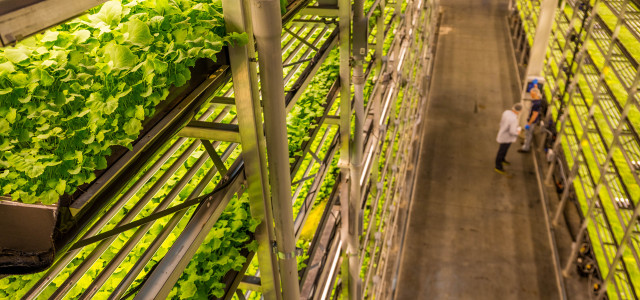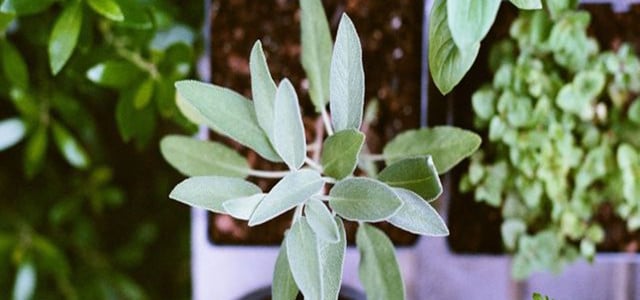Vertical farming literally takes agriculture to new heights, allowing a large amount of vegetables to be grown in a small amount of space. But is it really sustainable?
Vertical farming sounds a bit dreary at first. What some people call the future of agriculture doesn’t exactly paint a romantic picture of idyllic farming life. There are no green fields under a blue sky, LEDs shine instead of the sun, and the shelf beds are moved around electronically so that plants get the optimal amount of light.
The fruits and vegetables grown in vertical farms don’t even need soil; modern methods such as hydroponics (growing plants in water-filled containers) or aeroponics (use of spray mists) ensure that the plants are supplied with the exactly calculated amount of water and nutrients that they need.
Less Space, More Yield
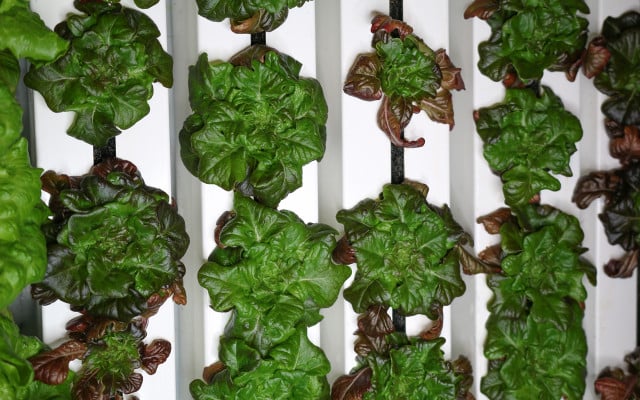
Vertical farming requires much less water than conventional farming methods and is largely automated. Computers fertilize and water seedlings, control the air temperature, measure growth and yield, and collect data that can be used to further optimize operations.
Some vertical farms even raise fish: as part of an aquaponics system, they enrich the fertilizer with nutrients, and in return enjoy the water purified by the plants. Because vertical farms exist in a closed and controlled environment, germs and bacteria are not a big concern. That means that plants can be cultivated with little to no pesticides.
Plus, thanks to added nutrients, food from vertical farms is sometimes said to taste better. Soil degradation in conventional farming can lead to diminished flavor in fruits and vegetables, but since vertical farms don’t use soil, this problem becomes moot. Also, modern farming methods give rise to produce with longer shelf lives, which plays an important role in many countries and is highly relevant to the restaurant and catering industry.
Is Vertical Farming Unnatural?



Vertical farming has many benefits, but the system is still quite controversial. Critics consider this method of raising crops too unnatural. “Agriculture in itself is unnatural,” counters Dr. Dickson Despommier, former professor of environmental health and pioneer of vertical farming. And he does seem to have a point. In what way is vertical agriculture truly different from traditional agriculture? In both cases, we intentionally plant and raise crops with methods developed by humans. Those methods are developed specifically for efficiency; why should the fact that vertical farms are especially efficient make them more unnatural? The definitions of “natural” and “unnatural” aren’t as clear cut as they might seem.
And they truly are more efficient. Vertical farming is sometimes considered capable of feeding a growing world population in a way that has a low impact on the environment. The amount of food that these types of farms produce is unprecedented: Crop One, soon to be the world’s largest vertical farm, will be able to produce up to 3000kg of vegetables per day.
Vertical Farms: Growing Vegetables in the Desert
Even more remarkable than the fact that Crop One will be able to produce so much food is the fact that it will do it from the middle of the desert.
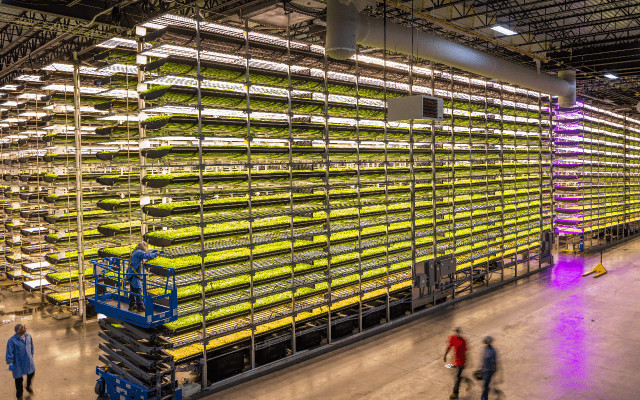


Crop One is located in Dubai, where heat and drought are the norm. That means, fresh produce must be flown in at a high cost, which not only drives up prices but also causes high CO2 emissions. It’s no surprise, therefore, that the Emirates are interested in vertical farming, where enormous amounts of vegetables can be produced in little space, with very little water.
Crop One was scheduled to begin production in early 2020, but it seems that due to the Coronavirus pandemic, things have been delayed. For now, the largest vertical farm in the world is in New Jersey, where AeroFarms houses a 6,500 square meter vertical farm that produces over 900 tons of food per year. The harvested vegetables are mainly sent to supermarkets. At AeroFarms, plants grow on reusable nets made of recycled plastics and are maintained by computers. Water consumption is only 5 percent of what is needed in conventional agriculture. Space consumption is also much lower: the yield per square meter is a whopping 350 times higher than in conventional farming.
Vertical Farming: Is it Really Sustainable?
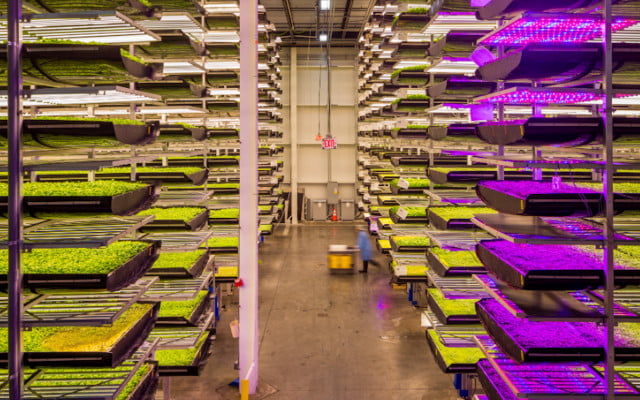


But is vertical farming really all it’s cracked up to be? On the one hand, there are good reasons to radically change conventional agriculture: it is responsible for a big portion of global CO2 emissions, it pollutes water with fertilizers and pesticides. Conventional monoculture agriculture also leads to less biodiversity and the extinction of certain plant species. Not to mention that because our current agricultural system is based on local climate, long transport routes are required to deliver produce to places where the weather is less favorable. In all of these points, vertical farming is the clear winner.
On the other hand, proponents of conventional agriculture argue that microorganisms that come from the soil are vital to human health. Because there is no soil used in vertical farms, the microorganisms and nutrients that would normally be present naturally must be added to the water given to the crops. Many people criticize this, both because it seems too much like science fiction, and because they are mistrustful of the impact it will have on the microbiome.
The sustainability of the huge amount of LED lamps, which consume a large amount of energy day and night (and also have to be produced and disposed of) has also come into question. And perhaps the most feared consequence of all, the increased efficiency of vertical farming could lead to the loss of many jobs.
What the Science Says



Is vertical farming good for the world, or bad for it? If you ask science, the answer seems unequivocal.
Current research is focused on the nutritional value of fresh food grown in vertical farms, as well as the environmental impact of the entire vertical farm itself, from the day it is built to the day it is demolished.
One study in 2018 concluded that on a global scale, vertical farms offer more ecological advantages than disadvantages, but also showed that the cultivation method makes more or less sense depending on the region.
As far as sustainability is concerned, some studies show that vertical farming would not only be advantageous but that it is absolutely necessary to feed the world’s growing population, especially in current climate conditions. For example, in one of the largest surveys on the subject to date, the Fraunhofer Institute emphasized in 2018 that the consequences of climate change could significantly limit the growth of the agricultural industry in the future.
As a result, the capacities of conventional agriculture may no longer be sufficient for a growing world population. Affordable solutions are needed – vertical farms could be one of them.
This article was translated from German to English by Christie Sacco. You can read the original here: Stapelweise Grün: Wie Vertical Farms die Landwirtschaft verändern
** Links to retailers marked with ** or underlined orange are partially partner links: If you buy here, you actively support Utopia.org, because we will receive a small part of the sales proceeds. More info.Do you like this post?






